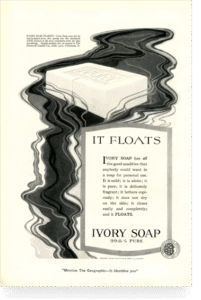What if coincidence builds a Brand?
Brand extensions and their conditions

Sometimes, a Brand extension doesn’t start with a masterplan, but with coincidence. A failed glue formula. A soap that suddenly floats. A brand that ends up in a different product category by chance and unexpectedly thrives.
What all these examples have in common? Not the coincidence itself, but the strategic ability to recognise it, harness it and anchor it within the brand story.
A great example in this context is Daikin. The brand faced a strategic dilemma: should the name Daikin remain exclusively linked to air conditioning, or could it also be applied to other innovative solutions such as heating? The question became even more urgent when sub-brand Altherma grew into a strong, nearly independent brand in Europe, causing brand confusion.

Remarkable conducted a strategic audit and brought together various stakeholders. The outcome? The brand mission was broadened from ‘air conditioning’ to the wider concept of ‘climate management’. This allowed Altherma and future innovations to be integrated within a coherent brand architecture — without undermining the parent brand. This case demonstrates that brand extensions can also arise from acquisitions or scaling, and highlights the importance of strategically anchoring such growth.

